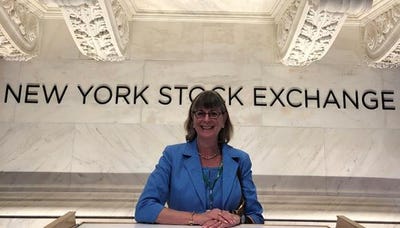Over the past two weeks, the publicly-traded solid waste companies reported their third quarter 2022 results and held follow-up conference calls. In this edition of Business Report, we highlight the common themes, and touch on the differences, in the reports and management commentary.

Over the past two weeks, the publicly-traded solid waste companies reported their third quarter 2022 results and held follow-up conference calls. In this edition of Business Report, we highlight the common themes, and touch on the differences, in the reports and management commentary.
Strong Pricing Generally Up and to the Right
Across the board, pricing was very strong, exceeding expectations, and up sequentially in almost all cases. WM (WM) and Republic Services (RSG) reported yields that rose sequentially by 90 basis points and 60 basis points, respectively, and reached record levels. Similarly, core pricing at Waste Connections (WCN) and GFL Environmental (GFL) was 8.3% and 8.6%, sequentially up 110 and 130 basis points, respectively. Casella Waste (CWST) reported pricing that dipped sequentially, likely due to less help from consumer price index (CPI) resets on CPI-indexed contracts than its larger brethren. Notably, customer receptivity was also positive, with retention and churn rates remaining stable.
CPI resets on the indexed contract part of the business were pegged by several management teams at around a 450-550 basis point price rollover into 2023, which led to predictions for continued strong 2023 pricing—with “locked in” pricing from that alone, coupled with current open market pricing, frequently and consistently pegged at between 5%-6%, with more open market actions potentially driving 2023 pricing even higher. WCN noted that it expected its exclusive (franchise) market pricing to rise from 5.5% to 7% in 2023, with overall pricing to be in the range of 8%-9%. GFL echoed that it saw 2023 pricing in a similar range.
Volumes Strong, Despite Expected Recession Fears
Volumes were also generally quite strong and above expectations. CWST and RSG reported volumes of 2% and 2.2%, respectively, while WM’s collection and disposal volume growth was 1.7%, even after noting the loss of three larger unprofitable contracts. Volume strength was characterized as broad based, both geographically and across all business lines. Management teams noted no signs of economic weakness (yet) in their businesses, though that was not particularly surprising as solid waste is considered a concurrent indicator at best, if not lagging. Also of note, special waste, often considered an economic bellwether or economically sensitive, was up 15% for WM and 13% for RSG. WCN was the exception here with volume of (1.5%), but that was attributed to company specific factors, not macroeconomic factors, and management noted positive C&D volumes. Importantly, key metrics for volume—net service intervals and net new business—remained positive. Although management teams were certainly cognizant of economic risk to volumes, they were fairly sanguine about the outlook.
Recycled Commodity Prices Fall Precipitously, Becoming a Larger Fourth Quarter Headwind
The major new negative in the third quarter, unsurprisingly, was the fall in recycled commodity prices (largely across the “basket” of recycled commodities), which became a headwind in the third quarter after being a positive contributor in the first half. But the precipitous fall in old corrugated cardboard (OCC) in October, as reported by RISI, forced the companies to take recycled commodity price assumptions down much more dramatically in the fourth quarter than previously signaled, typically put at levels of around 45% below the third quarter average. The resulting expected fourth quarter recycling headwind was also typically somewhat larger than analysts had been expecting. Although OCC was the main recent driver, and many industry experts fear a bottom has yet to be reached, plastics were also a significant year-over-year drag, though recycled plastics pricing appeared to stabilize in the October reporting.
Pricing Tops Inflation, Inflecting Margins
Although aided by operating efficiencies as well, pricing was generally characterized by management teams as being in excess of inflation. RSG’s yield of 5.6% was in excess of their internal cost of inflation, which was put at around 5%. CWST’s solid waste pricing of 6.6% exceeds its cost of inflation, which it estimated to be around 5.9%. As a result, underlying solid waste margins expanded anywhere between 40 basis points to 120 basis points, and generally overall company EBITDA margins rose as well, despite recycling headwinds. The exception to an overall company margin increase was RSG, where total company margins were impacted by the acquisition of lower margin US Ecology.
Although labor availability issues, turnover, and wage inflation seemed to have at least peaked at a number of the companies, overall internal cost inflation levels remain persistently high, if more stable, according to frequent management commentary. And, although most expressed the expectation (or hope) that inflation will ebb as we enter next year, apparently no one has yet to actually see it!
Guidance Reaffirmed or Raised
All the companies raised guidance in the second quarter. In the third quarter, WM and RSG generally reaffirmed full year 2022 guidance. The sudden and sharp downturn in recycling was characterized as offset by higher organic growth in the core solid waste business, primarily price driven. The smaller three players generally raised elements of their guidance. CWST and WCN raised 2022 revenue and EBITDA guidance, and both companies reaffirmed their free cash flow (FCF) guidance. GFL raised its revenue guidance and reaffirmed its EBITDA and FCF guidance.
Outlook for 2023 Margin “Bump” More Cloudy
During the second quarter conference calls, there was considerable discussion about the potential for an outsized margin “bump” in 2023, given the prospects for much higher CPI resets on the indexed business, combined with ebbing inflation costs, particularly wage costs. Given stubbornly high internal inflation costs, coupled with what are now seen as material recycling headwinds, there was now more hedging on this potential margin bump, unsurprisingly, as companies (and analysts) tend to “baseline” their 2023 recycling assumptions off of fourth quarter levels, which as previously noted have come down dramatically. That said, most management teams continue to target margin improvement of 30-50 basis points in 2023. GFL was the standout here, still seeing the potential for 100 basis points of margin improvement in 2023, including the recycling headwind!
More Headwinds Developing on the Free Cash Flow Front
Given the rise in interest rates, interest expense is expected to rise noticeably in 2023, while cash taxes are also generally expected to be higher, in part due to lower bonus depreciation. Also, and again at odds with the prospect of a gloomier economic picture, higher expected capex spending was called out by a number of companies on growth and sustainability investments. CWST increased capex expectations on higher inflation and disposal infrastructure, while RSG expects to spend more on polymer centers. WM was the standout here, as management indicated that 2023 would mark the heaviest investment year for both recycling and renewable natural gas (RNG) —the company is targeting $1 billion in sustainable investments in 2023 versus $550 million expected to be spent in 2022.
M&A Rocks On At An Elevated Pace
After all the companies indicated outsized acquisition opportunities in the early part of the year, third quarter results essentially kept all the companies on pace to make those elevated targets. WM completed more than $200 million of acquisitions in the third quarter, putting it on pace to its $300-$400 million goal. Excluding US Ecology, RSG spent $400 million. Year-to-date, CWST has already completed 13 acquisitions with $48 million in acquired revenue, with another $30 million under letters of intent (LOI), while WCN has signed or closed acquisitions with approximately $570 million of total annualized revenue. M&A pipelines were characterized as still robust, with many high-quality private players eager to sell.
Signposts For 2023
All the companies give more specific and formal guidance in their fourth quarter reports in February, but generally some signposts for 2023 are put out in the third quarter, and generally RSG usually provides some high-level EPS and FCF ranges. Management teams were more circumspect with regard to this in the third quarter, likely due to economic and recycling uncertainty. RSG did note that it expected high-single-digit growth in revenue, EBITDA and FCF, versus the low double-digit growth management thought possible in the second quarter. CWST signaled an outlook for high-single-digit revenue growth, low-double-digit EBITDA growth and FCF growth of 10%-15%. WCN essentially reaffirmed that it still saw double-digit growth in revenue and FCF in 2023, while it still expects an above average underlying solid waste margin improvement, which will offset the recycling headwind. Lastly, GFL forecast organic growth in the high single digits, high teens growth in EBITDA and double-digit growth in FCF, given higher interest costs.
About the Author(s)
You May Also Like




